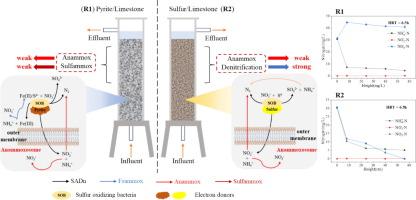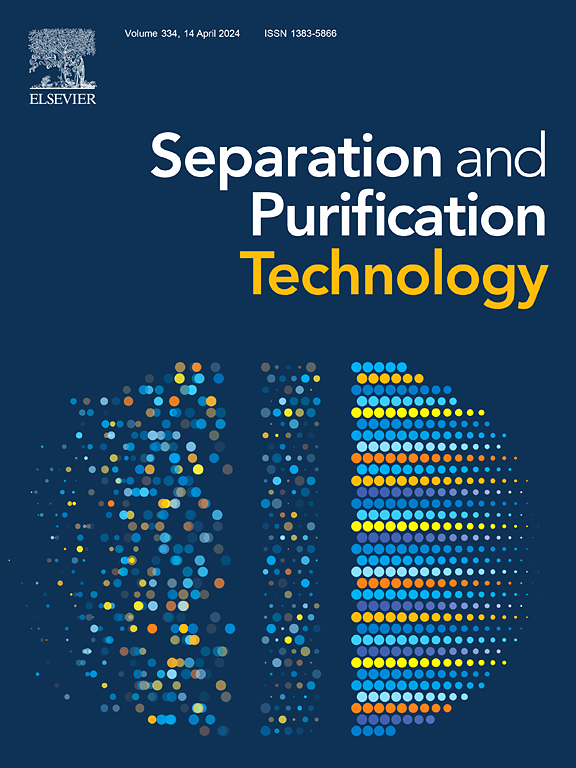Simultaneous removal of NH4+ and NO3– by coupling sulfur-based autotrophic denitrification and ANAMMOX with different electron donors
IF 8.1
1区 工程技术
Q1 ENGINEERING, CHEMICAL
引用次数: 0
Abstract
Unstable nitrite supply and low ammonia concentration limited the application of mainstream Anammox. In this study, sulfur-based autotrophic denitrification coupled Anammox system (SADA) was established with pyrite and sulfur as electron donors, respectively, to simultaneously remove NH4+-N and NO3–-N. More than 85 % of the total inorganic nitrogen removal efficiency was achieved with S0 as the electron donor. The synergistic nitrogen removal of autotrophic denitrification and Anammox reduced SO42− production. The average NH4+-N removal efficiency reached 94.73 % when pyrite was used as the electron donor, but the NO3–-N concentration in the effluent was higher than that in the influent. Microorganisms associated with nitrogen cycle were significantly enriched at the bottom of both reactors, where major biochemical processes occurred. Batch tests showed the coexistence of multiple N metabolic pathways in SADA, including Anammox, autotrophic denitrification, Sulfammox and Feammox. The genus Thiobacillus, Ferritrophicum, Candidatus_Brocadia, Ignavibacterium and Thermoanaerobaculum played major roles in nitrogen removal.

求助全文
约1分钟内获得全文
求助全文
来源期刊

Separation and Purification Technology
工程技术-工程:化工
CiteScore
14.00
自引率
12.80%
发文量
2347
审稿时长
43 days
期刊介绍:
Separation and Purification Technology is a premier journal committed to sharing innovative methods for separation and purification in chemical and environmental engineering, encompassing both homogeneous solutions and heterogeneous mixtures. Our scope includes the separation and/or purification of liquids, vapors, and gases, as well as carbon capture and separation techniques. However, it's important to note that methods solely intended for analytical purposes are not within the scope of the journal. Additionally, disciplines such as soil science, polymer science, and metallurgy fall outside the purview of Separation and Purification Technology. Join us in advancing the field of separation and purification methods for sustainable solutions in chemical and environmental engineering.
 求助内容:
求助内容: 应助结果提醒方式:
应助结果提醒方式:


